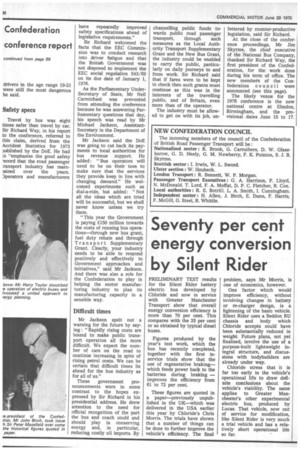Seventy per cent energy conversion by Silent Rider
Page 92

If you've noticed an error in this article please click here to report it so we can fix it.
PRELIMINARY TEST results for the Silent Rider battery electric bus developed by Chloride and now in service with Greater Manchester Transport show that overall energy conversion efficiency is more than 70 per cent. This compares with the 25 per cent or so obtained by typical diesel buses.
Figures produced by the year's test work, which the bus has recently completed, together with the first inservice trials show that the use of regenerative braking— which feeds power back to the batteries during braking — improves the efficiency from 61 to 72 per cent.
These figures are quoted in a paper—previously unpublished in the UK—which was delivered in the USA earlier this year by Chloride's Chris Morris. The trials have shown that a number of things can be done to further improve the vehicle's efficiency. The final problem, says Mr Morris, is one of economics, however.
One factor which would improve efficiency, without involving changes in battery or re-charger design, is a lightening of the basic vehicle. Silent Rider uses a Seddon RU chassis and body which Chloride accepts could have been substantially reduced in weight. Future plans, not yet finalised, involve the use of a purpose-built lightweight integral structure, and discussions with bodybuilders are already under way.
Chloride stress that it is far too early in the vehicle's operational life to draw definite conclusions about the vehicle's viability. The same applies to Greater Manchester's other experimental electric bus, produced by Lucas. That vehicle, now out of service for modification, like Silent Rider is very much a trial vehicle and has a relatively short operational life so far.




























































































































































